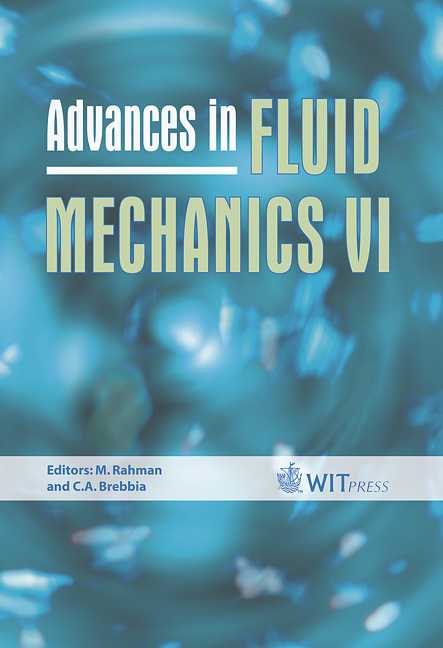CFD Modelling Of Wall-particle Interactions Under Turbulent Flow Conditions
Price
Free (open access)
Transaction
Volume
52
Pages
10
Published
2006
Size
541 kb
Paper DOI
10.2495/AFM060521
Copyright
WIT Press
Author(s)
M. Mollagee
Abstract
The effects of particle roughness and the impact it has on the development of turbulence in non-Newtonian slurry flow remains difficult to predict. The common analytical tools used take only the viscous characteristics of the slurry into account. Homogenous solid-liquid suspensions are often described using different continuum models. Evidence suggests that these models may be inadequate due to the presence of solid particles sharply influencing velocity gradients. Experimental work was conducted using homogenous non-Newtonian slurries. Comparisons were made of wall-particle interactions experienced for slurries with different representative particle sizes. This was subsequently modeled using the FLUENT Computational Fluid Dynamics software to validate these findings. This paper documents these findings and presents a comparison between the experimental and the computational model. Keywords: non-Newtonian slurries, experimental versus computational methods, viscous sub-layer, wall turbulence, wall-particle interactions. 1 Introduction Turbulent flow of non-Newtonian fluids continues to attract the attention of researchers from fields as diverse as physics, hydraulics and engineering. The flow dynamics differs markedly when compared to the behaviour under laminar conditions. Reliable prediction has presented complex theoretical as well as practical problems, both from the point of view of the fundamental physics of the phenomenon as well as in engineering practice. The principle dilemma is whether the turbulent headloss can be predicted from the rheology of the slurry alone, or whether other properties also play a role. In the case of mine tailings where slurries are regarded as stratified flow systems, accurate prediction can be challenging from two perspectives:
Keywords
non-Newtonian slurries, experimental versus computational methods, viscous sub-layer, wall turbulence, wall-particle interactions.





